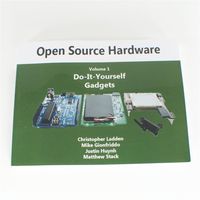
(The original of this picture by Scott Beale, the Laughing Squid, is available at Flickr.)
But outsiders might be quick to ask the question. Why is Open Source Hardware just being defined now when we've had open source in software for over a decade?
Here is why.
1. Design is just one element in hardware
The value of hardware has traditionally laid in the manufacturing process, not the design process. As you scale up manufacturing, the design costs falls to near zero (on a per-unit basis). Yet as Apple (and many others) have shown, that design is where the profit lies. So while open source software means sharing your costs, open source hardware has meant sharing your profits.
2. Making just one makes no sense.
This has been the traditional case against open source hardware. You have to make the thing, your costs are based on making, so a design by itself is fairly worthless. This is changing. Companies like Desktop Factory and Dimension Printing are making one-off creations possible. Rapid prototyping moves value from the making of the thing to its design, and turns designs into the equivalent of software that can be shared.
3. Design is becoming more complex.
As designs becoming increasingly software-driven they become more complex. You can see that truth in New York right now. Look up at the new Frank Gehry skyscraper downtown. Value moves from hardware to software, just as is true in computers. And software has a habit of getting more complex as time goes by. It's simple math. Because software remains hand-made, and software costs rise exponentially with complexity, competition is eventually driven out unless some way is found to share the costs of complexity. That's what open source is all about.
So where will open source fit into hardware?
It's important to note that design is not the same thing as style. You can get a lot of different cars off one platform. My 3005 Scion is built on a Toyota Corolla platform, and underneath it's a lot like my daughter's older Corolla. Car companies have been doing this sort of thing for years.

- The corporate model. Ford revealed this with its open source Sync development in 2009. Have you noticed that Ford seems cool again? It's not only because they refused the bailout.
- The consortium model. Companies can get together to share the costs of a complex part like a hybrid engine or a better battery. Look for headlines like this soon.
- The community model. This is the one BoingBoing likes, and the one its readers think about most often. But I think it will be the last to develop. It will take off when we see projects which, like those of Apache, have a market-based reason for being.
The need for open source in hardware is just now becoming apparent. As with renewable energy you might say it's near where computing itself was 40 years ago. But, again like renewable energy, the model has all of that previous computing history to fall back on. Mistakes can be avoided, and evolution can occur much faster.










